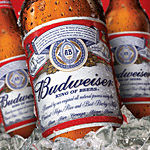Coors Light has surpassed Budweiser as the No. 2 beer by shipments in the United States, foretelling a downward trend for full-calorie lagers that will continue, says a strategy expert at Washington University in St. Louis.
 “Very few young people drink Budweiser, Coors or Miller today,” says William C. Finnie, PhD, adjunct professor of strategy at Olin Business School.
“Very few young people drink Budweiser, Coors or Miller today,” says William C. Finnie, PhD, adjunct professor of strategy at Olin Business School.
“Older beer drinkers like me still love Budweiser. But unless something amazing happens, the downward trend for full-calorie premium lagers like Bud will continue,” says Finnie, who worked in marketing analysis at Anheuser-Busch from 1965-1991.
This marks the first time since 1993 that Anheuser-Busch does not control both of the top two beer brands, according to Beer Marketer’s Insights. Bud Light remains the nation’s top seller.
Budweiser has long dominated a market segment known as full-calorie lagers, which also includes Miller and Coors. This segment dominated the U.S. beer market in the early 1980s.
However, says Finnie, the full-calorie lager segment has been shrinking and will continue to shrink because the mass market has moved to light beers, and imports and craft beers have grown tremendously on the high end.
Finnie says that despite Budweiser’s decline, Anheuser-Busch InBev will continue to support the iconic brand with a large marketing effort.
“Budweiser is still No. 3 in volume, and at good margins,” he says. “It generates huge cash flow.”
Finnie worked on a study for Anheuser-Busch in the late 1990s, which showed Bud Light share increases actually help Budweiser, and vice versa.
“People are either regular beer drinkers or light beer drinkers,” he says. “Therefore, when Budweiser drinkers see a Bud Light ad, they see their brand being advertised. They don’t switch to Bud Light but it strengthens their loyalty to Bud.
“Similarly, Bud Light drinkers see their brand being advertised when they see a Bud ad. Therefore, advertising Bud will prevent its decline from accelerating and also support Bud Light,” he says.
Budweiser is a beautiful product with an incredible heritage, Finnie argues.
“Some people still believe the right marketing program could turn it around, as it did in 1977, when we created the ‘For all you do, this Bud’s for you’ campaign,” he says. “And beer tastes could change. In 10 years, young beer drinkers may start moving back.”